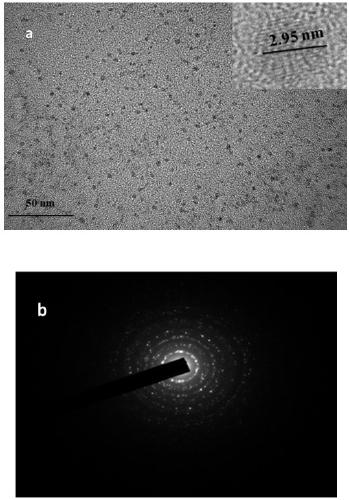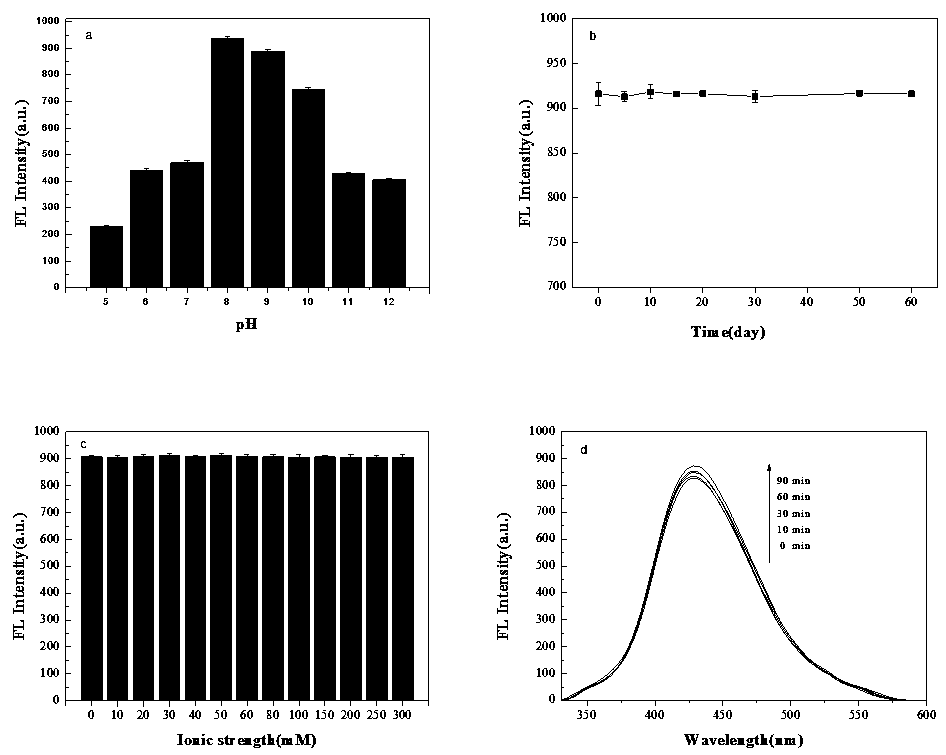AgNCs@APAP fluorescent probe and preparation method thereof, and application of AgNCs@APAP fluorescent probe in determination of Hg(II)
A fluorescent probe and needle technology, applied in the field of fluorescence analysis, can solve the problems of high detection cost, complex instrument technology, and long sample pretreatment process, and achieve the effect of wide linear range and low detection limit.
- Summary
- Abstract
- Description
- Claims
- Application Information
AI Technical Summary
Problems solved by technology
Method used
Image
Examples
Embodiment Construction
[0012] Preparation of AgNCs@APAP fluorescent probe
[0013] AgNCs@APAP was synthesized by a one-step synthesis method. Take acetaminophen (APAP) (7mL, 50mM) solution in a 50mL jacketed beaker, add AgNO 3 The solution (0.3 mL, 0.1 M) was then added with 2.7 mL of deionized water, and reacted for 10 h at 55° C. with magnetic stirring in the dark. Afterwards, it was filtered with a 0.45 μm hydrophilic PTFE needle filter, and then dialyzed through a 1 kDa dialysis bag, and stored at 4°C in the dark for future use.
[0014] characterize
[0015] figure 1 The UV-Vis absorption spectra of APAP and AgNCs@APAP show that AgNCs@APAP has characteristic absorption bands at 200nm, 245nm and 290nm, which proves that AgNCs@APAP and APAP are not the same substance.
[0016] figure 2 It is the high-resolution transmission electron microscope (a) and the electron diffraction pattern (b) of the selected area of AgNCs@APAP. figure 2 (a) It can be seen that the average particle size of AgN...
PUM
| Property | Measurement | Unit |
|---|---|---|
| The average particle size | aaaaa | aaaaa |
Abstract
Description
Claims
Application Information
 Login to View More
Login to View More - R&D
- Intellectual Property
- Life Sciences
- Materials
- Tech Scout
- Unparalleled Data Quality
- Higher Quality Content
- 60% Fewer Hallucinations
Browse by: Latest US Patents, China's latest patents, Technical Efficacy Thesaurus, Application Domain, Technology Topic, Popular Technical Reports.
© 2025 PatSnap. All rights reserved.Legal|Privacy policy|Modern Slavery Act Transparency Statement|Sitemap|About US| Contact US: help@patsnap.com



